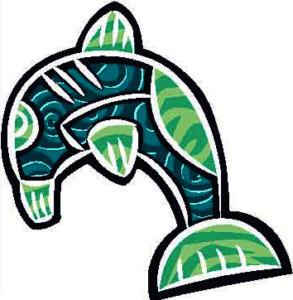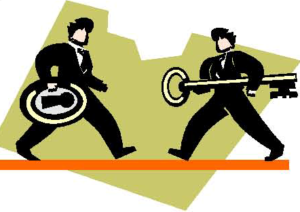Preparing Your Organization Now For The Recovery: How to Tap into Your Best Resource
By Dana & Ellen Borowka, Excerpt from Cracking the Personality Code
[dropcaps type=”circle” color=”” background=””]T[/dropcaps]he glory of great men should always be measured by the means they have used to acquire it.
≈ La Rochefoucauld
Communication has come so far over the years. In less than a split second, we can send emails to thirty different people around the world and everyone will receive the same data. Yet the most difficult challenge that can cost organizations thousands if not millions of dollars is still miscommunication in interpersonal exchanges. It’s amazing that this one area has not changed in thousands of years. One could say to a group, “Think of a whale.” Everyone in the room will have a different vision of a whale in their mind’s eye. Similarly, the  occasion for a misunderstanding can occur easily when someone is sharing an idea or giving an assignment.
occasion for a misunderstanding can occur easily when someone is sharing an idea or giving an assignment.
A lack of loyalty and connection to an organization can develop if people feel misunderstood or not valued. This can result in turnover and the loss of top talent. We are often contacted by individuals who have graduated from top schools, have a good job history, and are looking for career guidance. When they are asked why they are looking to leave their current position, we usually hear that they do not feel valued, engaged, or appreciated. They are typically high-level performers, and the loss to their employers is costly. If organizations take time to simply manage individuals according to their needs rather than just treating them like a mechanical part, then these star performers probably would not have the need to look for other opportunities.
Each of us is a valuable part of the whole, and we need to develop an empathic company culture in order to open lines of communication for creative contribution. That leads to engagement of ideas and respect so individuals feel that they can participate in a vision. Developing a supportive environment that encourages mentoring will create opportunities for knowledge to be shared with the various generations. Additionally, this provides a creative foundation for new and exciting processes, products, and services.
Cracking the Interpersonal Communication Code
But where to begin? How do we crack the interpersonal communication code? First, include others on your team or in your department in the discussion and ask the following questions:
- What is an area of your interpersonal communication that is not working as well as you would like?

- Have you seen this come up before? Give an example.
- What would the ideal outcome look like?
- What are you doing that is not working?
- What are you doing that is working?
Next, analyze the answers and look for patterns. Now you can start to develop an action plan. Be sure to utilize information from an in-depth work style and personality assessment as described in Chapter 5 that provides the eight ways to gain true insight into personality. This knowledge will illuminate a more effective way to communicate, encourage greater engagement of individuals, and contribute to creating respect, loyalty, and appreciation. The end results: enhanced retention, performance, and positive word of mouth for attracting top talent.
Over the next 10 to 30 years, finding qualified people is going to get more difficult with a predominantly maturing population. Retention of top people will be more important than ever, and positioning your organization for recruitment purposes is vital. People talk and reputations get developed very quickly through the Internet and word of mouth. How your organization communicates within itself is a good indication of how it communicates to the outside world. Putting people in the “right” position will lead to greater job satisfaction and success.
We knew one organization that placed a very high performing accounting coordinator into a sales role. This person was very unhappy and ended up leaving the company. If they would have simply recognized the skills and desires of the individual, they would not have lost a top performer. If someone is a troubleshooter, let them troubleshoot. If someone is in need of a process then strive to provide that for them. If someone is very creative then tap into it; otherwise, they could feel unchallenged and bored. When we strive to understand people’s strengths and manage accordingly, we then set them up for success. Use the information you gathered during the interview process, reference checking, and an in-depth work style and personality assessment to gain deeper insight for how to effectively work together.
A Success Story
One final story. An organization with a customer service department was not meeting the volume level they had set for inbound calls. The manager blamed the reps and identified them as “C” players. Later, this manager was placed in a different department and a new manager was brought in. This person sat down with each individual and then with the whole  group. The manager utilized information collected from in-depth work style and personality assessments of the team to understand the team members.
group. The manager utilized information collected from in-depth work style and personality assessments of the team to understand the team members.
As a team, they discovered that within twenty-four hours of delivery, calls were coming in to inquire about the time of the delivery and additional questions about the product. The team brainstormed ideas of how to reduce the inbound questions so that they could take new order calls. Together they came up with a simple idea of providing updates to the customer regarding the delivery as well as creating an information page for the typical product/delivery questions. The call volume changed dramatically. The team members were later asked why these ideas had not been suggested in the past. The response was very simple—no one had ever asked them. They had been reprimanded for lack of performance rather then asking for their input in order to solve the problem. The results were improved productivity, performance, and job satisfaction, since they now had an environment that invited participation and teamwork.
Discover Your Leadership Style
To find out what your leadership style is, you can take a quick leadership assessment by clicking on this link.
It is a very helpful tool for managers, supervisors and team members to complete and discuss with their team.
Action Items
The following are some action items to consider:
- Contact Lighthouse Consulting Services, LLC to learn how you can use an in-depth work style and personality assessment for the hiring process, staff development, and personal growth (www.lighthouseconsulting.com).
- Utilize the information gathered from in-depth work style and personality assessments to manage more effectively. This will in turn reduce the learning curve for on-boarding and help to better understand the individuals that you work with.
- Place yourself and others in positions that take advantage of strengths to ensure success.
- Be clear with expectations, listen carefully and paraphrase when something seems to be an obstacle for the person.
- Take the time to mentor people to succeed through empathic understanding of how they might approach an opportunity or challenge, and work together to build a common bridge. You can learn more about in-depth work style and personality assessments and how to incorporate them into a hiring and staff development process for your organization by visiting our website, www.lighthouseconsulting.com. There you can sign up for our Keeping on Track publication that provides monthly proactive articles.
Permission is needed from Lighthouse Consulting Services, LLC to reproduce any portion provided in this article. © 2014
Dana Borowka, MA, CEO and Ellen Borowka, MA, Senior Analyst of Lighthouse Consulting Services, LLC with their organization constantly remain focused on their mission statement – “To bring effective insight to your organization”. They do this through the use of in-depth work style assessments to raise the hiring bar so companies select the right people to reduce hiring and management errors. They also have a full service consulting division that provides domestic and international interpersonal coaching, executive onboarding, leadership training, global options for expanding your business, sales and customer service training, operational productivity improvement, 360s and employee surveys as well as a variety of workshops. They have over 25 years of business and human behavioral consulting experience. They are nationally renowned speakers and radio personalities on this topic. They are the authors of the books, “Cracking the Personality Code” and “Cracking the Business Code”. To order the books, please visit www.lighthouseconsulting.com.
If you would like additional information on this topic or others, please contact your Human Resources department or Lighthouse Consulting Services LLC, 3130 Wilshire Blvd., Suite 550, Santa Monica, CA 90403, (310) 453-6556, dana@lighthouseconsulting.com & our website: www.lighthouseconsulting.com.
Lighthouse Consulting Services, LLC provides a variety of services, including in-depth work style assessments for new hires & staff development, team building, interpersonal & communication training, career guidance & transition, conflict management, 360s, workshops, and executive & employee coaching. Other areas of expertise: Executive on boarding for success, leadership training for the 21st century, exploring global options for expanding your business, sales and customer service training and operational productivity improvement.








